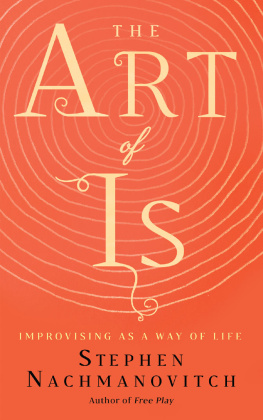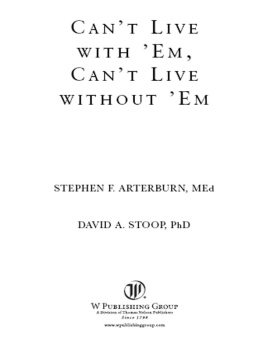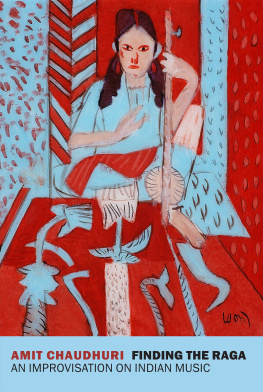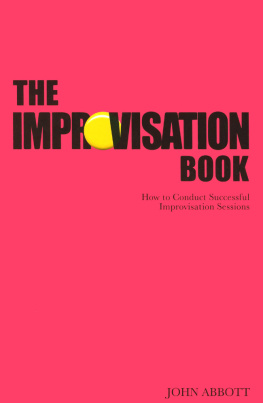Praise for The Art of Is
Stephen Nachmanovitchs The Art of Is is a philosophical meditation on living, living fully, living in the present. To the author, an improvisation is a co-creation that arises out of listening and mutual attentiveness, out of a universal bond of sharing that connects all humanity. It is a product of the nervous system, bigger than the brain and bigger than the body; it is a once-in-a-lifetime encounter, unprecedented and unrepeatable. Drawing from the wisdom of the ages, The Art of Is not only gives the reader an inside view of the states of mind that give rise to improvisation, it is also a celebration of the power of the human spirit, which when exercised with love, immense patience, and discipline is an antidote to hate.
Yo-Yo Ma, cellist
In an age of standardized packages and constrained choices, Stephen Nachmanovitch gives us The Art of Is, a refreshing encounter with how to improvise and be fully alive in the face of deadening habits of mind. The author is a musician and a teacher who has an uncanny ability to see and listen and help others do likewise. We are verbs, not nouns, he tells us, because we are ever in motion open to change and surprise. Like musicians who improvise together, human beings can break barriers: teaching, playing, creating, and being present to one another. In clear prose, Nachmanovitch effortlessly shows how people discover in themselves the sheer power to relate and endlessly adapt.
Jerry Brown, governor of California 19751982 and 20112018
The Art of Is IS real ART! It is so lucid, grand, kind, easygoing, and deeply helpful, I could not stop reading it, even in time I did not have! It is full of surprises, gems, and open-ended inspirations. It starts from the moment of Mahalia Jacksons startling outburst to MLK Jr., catapulting his I have a dream speech into the improvisation of a soaring liberation of the spirit that it was. Stephen Nachmanovitch takes us with him on his life-walk of love in music all over the world. He delivers us to a place of new vitality in our own lives where we more fully recognize the harmonies at hand. This is a lovely guidebook for our own journeys, helping us appreciate ourselves and each other as the precious human beings endowed with liberty and opportunity that we are!
Robert Thurman, Jey Tsong Khapa Professor of Buddhist Studies, Columbia University, co-founder of Tibet House
A beautiful book, full of power, full of life, written from the deep experience of an artist and a wise person.
Joan Halifax, abbot, Upaya Zen Center
Stephen Nachmanovitch brings forty years of practicing improv to the page and offers a rich trove, hard-won and long-pondered. In graceful prose that reflects not only his talking the talk but walking the walk, he explores the art of being present. Youll finish the book enriched by his experiences studying under Zen masters and his mentor, the great polymath Gregory Bateson, and teaching aspiring improvisers all over the world.
Randy Fertel, author of A Taste for Chaos: The Art of Literary Improvisation
Stephen Nachmanovitch beautifully reveals a world of communication and co-creation that is both new and ancient. To play in this realm of improvisation is to recognize the tenderness with which interdependence knows aloneness, and the way silence defines sound. The stories he tells show us that the complexity and simplicity of life itself exist in our interrelationships. These findings are laid out in this book with grace, humor, and careful articulation. Nachmanovitch makes it clear that the art of being human now is acutely tied into an improvisational way of being: making sense of ourselves, each other, and the natural world in ways that find new offerings within old patterns. It is to feel anew.
Nora Bateson, filmmaker, International Bateson Institute
The Art of Is gives us a precious philosophical prescription for engaging the creative opportunities of our life as the greatest work of art.
Alex Grey, artist

Also by Stephen Nachmanovitch
Free Play: Improvisation in Life and Art


New World Library
14 Pamaron Way
Novato, California 94949
Copyright 2019 by Stephen Nachmanovitch
All rights reserved. This book may not be reproduced in whole or in part, stored in a retrieval system, or transmitted in any form or by any means electronic, mechanical, or other without written permission from the publisher, except by a reviewer, who may quote brief passages in a review.
Credits on page 267 are considered an extension of the copyright page.
Text design by Tona Pearce Myers
Library of Congress Cataloging-in-Publication data is available.
First printing, April 2019
ISBN 978-1-60868-615-5
Ebook ISBN 978-1-60868-616-2
Printed in Canada on 100% postconsumer-waste recycled paper

New World Library is proud to be a Gold Certified Environmentally Responsible Publisher. Publisher certification awarded by Green Press Initiative. www.greenpressinitiative.org
10 9 8 7 6 5 4 3 2 1
For my dear ones, Leslie, Jack, and Greg
and in memory of Gregory Bateson, who taught me that
beauty is recognizing the pattern that connects
Contents
;
sometimes we try to clarify it. We dont stand on one leg.
We stand on both.
John Cage
.
Gregory Bateson
On August 28, 1963, at the Lincoln Memorial, during the climax of the March on Washington for Jobs and Freedom, the great gospel singer Mahalia Jackson was sitting on the platform near her friend Martin Luther King. Dr. King had begun reading his prepared address. , Jackson broke in and shouted, Tell them about the dream, Martin! Tell them about the dream!
King pushed aside his notes and began improvising.
His written text did not mention dreams. As he looked up at the crowd and rolled into the rhythmic majesty of I have a dream, Dr. King was riffing on part of an earlier speech he had given at Cobo Hall in Detroit but that he felt had not worked very well; he was riffing on bits from the Bible, from Shakespeare, from Lincoln, from the Constitution and the Declaration of Independence. The ghost of Gandhi was never far. Though we can identify the deep roots of Kings words, the innumerable strands and influences had been collectively digested, absorbed, and integrated. The interbeing of many is expressed in the voice of each of us. We recognize Kings courage and brilliance, but he was not some solitary genius spinning creativity out of whole cloth. There are no such geniuses. This is what it is to be human: to learn and assimilate the patterns of culture, community, and environment, both conscious and unconscious, and alter them as needed, make them ours, so that the voice spontaneously emerging is our voice, interdependent with the human world in which we live. Thus we breathe life into art and art into life.
Improvising means coming prepared, but not being attached to the preparation. Everything flows into the creative act in progress. Come prepared, but be willing to accept interruptions and invitations. Trust that the product of your preparation is not your papers and plans, but yourself. Know that no solo is solo: even one of the greatest speeches of the twentieth century was helped into existence by a good friends blurted reminder.
Next page
















